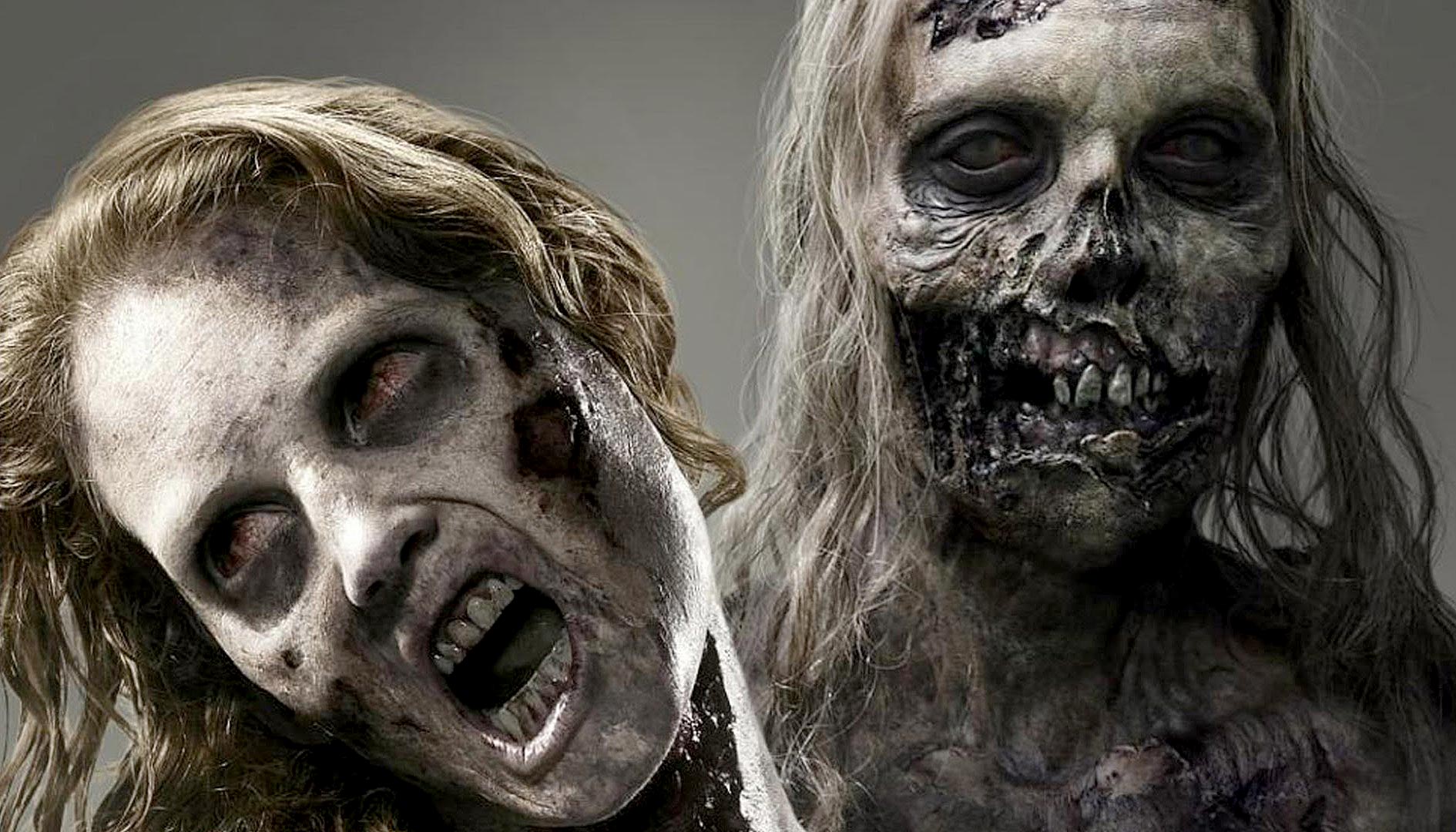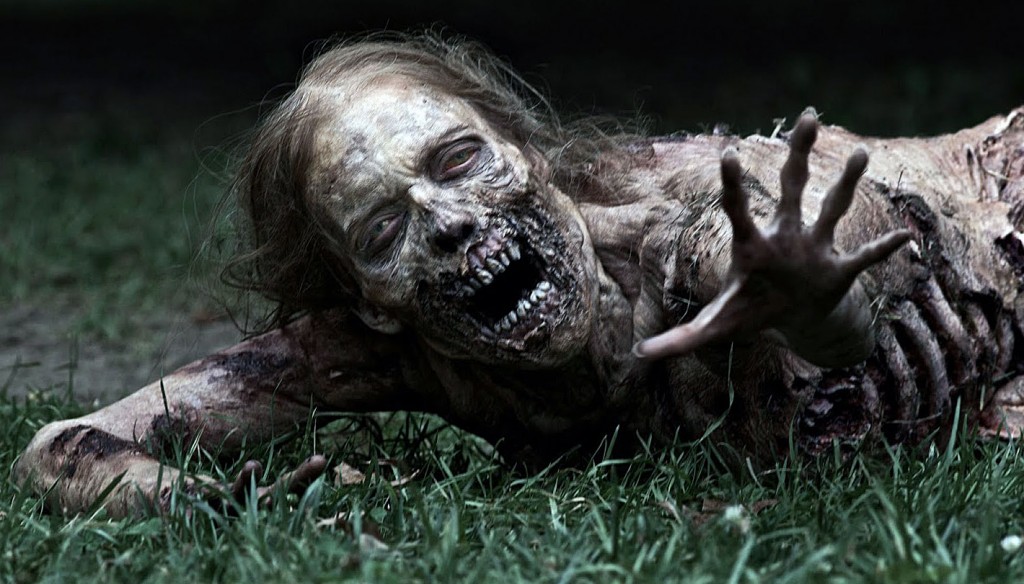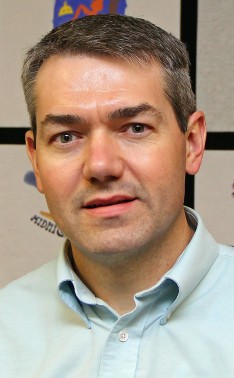 New capstone course uses pop culture to examine disease
New capstone course uses pop culture to examine disease
By SARA GIBONEY
UNK Communications
KEARNEY – They walk with a wide shuffle, almost dragging their feet along the ground.
Their skin is decaying, open wounds exposing bleeding muscle tissue and the white of their bones.
Their speech is slurred, words mostly unrecognizable.
What illness or illnesses could this person have?
Students in a new The Living Dead in Fact and Fiction capstone course at the University of Nebraska at Kearney are asking that question as they study the characteristics of zombies and vampires.
 “If we can take something students enjoy, like something from popular culture, and bring it into the classroom and get the students engaged in it, it’s a good thing,” said Greg Brown, professor of kinesiology and sport sciences. “It gets more students in the classroom and gets them motivated to learn. And you never know, maybe we’ll get some good physiologists, neuroscientists or medical doctors out of it.”
“If we can take something students enjoy, like something from popular culture, and bring it into the classroom and get the students engaged in it, it’s a good thing,” said Greg Brown, professor of kinesiology and sport sciences. “It gets more students in the classroom and gets them motivated to learn. And you never know, maybe we’ll get some good physiologists, neuroscientists or medical doctors out of it.”
Brown’s love of vampire movies was the inspiration for the course.
“I’ve always been interested in scary movies … vampires more than zombies. I started watching the “Walking Dead,” but by the third or fourth episode it was a little too intense for me. But zombies embody so many of our cultural fears. Vampires are interesting because they’re romantic and strange.”
Brown’s favorite vampire movie is “Dracula Untold.”
“Rather than using science to teach popular culture, we’re turning it around. We’re taking popular culture and using it as a way to get people interested in science,” Brown said.
During the course, novels, television episodes and movies are used to identify disease symptoms displayed by the living dead, and the symptoms are evaluated regarding what type of medical condition might cause the symptoms. In early America, Brown said, people with tuberculosis, rabies, porphyria and other diseases were often mistaken for the living dead.
 “There’s a history of people really believing in vampires,” Brown said. “There’s also a correlation between deviant burials and some kind of illness that came through the area. More than 100 years ago, people didn’t understand bacteria and viruses. So, of course, people dying in unusual manners must have been evil spirits.”
“There’s a history of people really believing in vampires,” Brown said. “There’s also a correlation between deviant burials and some kind of illness that came through the area. More than 100 years ago, people didn’t understand bacteria and viruses. So, of course, people dying in unusual manners must have been evil spirits.”
Deviant burials included burying bodies with stones in the mouths or a stake through the heart. These types of burials were meant to ward off evil spirits or prevent the person from returning from the dead.
Students in the course also read scholarly journals and books, and watch movies about the living dead to study the characteristics of zombies and vampires.
“They have to ask themselves, which disease would cause a human to actually act like this? What is not realistic? They have to compare reality from myth,” Brown said. “None of these diseases completely explain vampires or zombies, but when we put diseases together people begin to resemble the living dead. If someone has athletes foot, so it looks like their skin is decaying, and they also have hypoglycemia, which causes them to have mental confusion, they may display characteristics of the living dead.”
This is the first semester the class has been offered. It will be offered again in fall 2016.
Guest lecturers have included Kim Carlson, a UNK biology professor who talked about diseases and genetics; an illustrator who spoke about his creative process when drawing the living dead; and a makeup artist who talked about the process of applying makeup to create a realistic-looking zombie.
“My hope is that students are learning how to think about things more critically, and not just take what they see on the surface for granted. The idea is that studying the zombie or the vampire is pushing them to think about what is causing them to be that way,” Brown said.
“A lot of the students are getting an appreciation and understanding of medicine and physiology that they didn’t have before,” added Brown. “And hopefully they’re having fun.”
WHAT IS A CAPSTONE COURSE?
Capstone courses evaluate information from more than one academic discipline and formulate logical connections between disciplines. Students are encouraged to take capstone courses outside of their major or minor. Capstone courses are open to juniors and seniors within six hours of completion of their general studies requirements.
-30-
Source: Greg Brown, 308.865.8333, brownga@unk.edu
Writer: Sara Giboney, 308.865.8529, giboneys2@unk.edu
What a great idea for a class! I would love to take or teach a class like this! Proud to be a Loper BSE ’96, MSE ’10